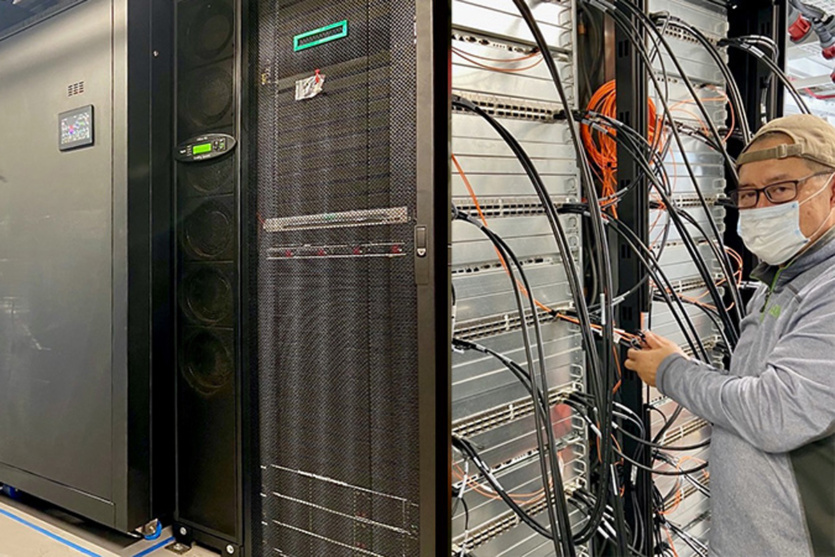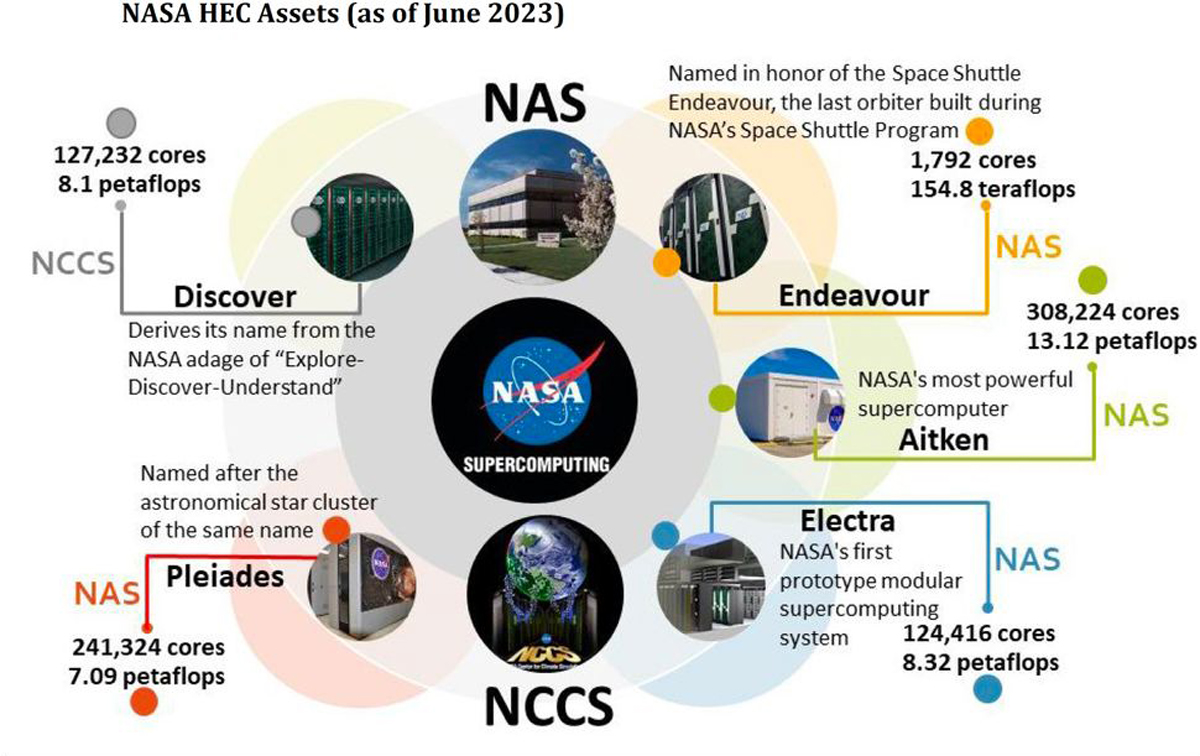
NASA works with the world’s leading technologies and makes important discoveries for humanity However, according to a special report NASA Office of Inspector General, NASA’s supercomputers are outdated and insufficient for the tasks at hand, resulting in mission delays. NASA supercomputers still rely primarily on CPUs.
Currently, NASA has five high-end computing systems located at the Advanced Supercomputing Facility (NAS) in Ames, California, and the NAS Climate Modeling Center (NCCS) in Goddard, Maryland. The list includes Aitken (13.12 PFLOPS, designed to support the Artemis lunar program), Electra (8.32 PFLOPS), Discover (8.1 PFLOPS, used for climate and weather modeling), Pleiades (7.09 PFLOPS, for climate modeling, astrophysical research and aerospace simulation), and Endeavour (154.8 TFLOPS).
These machines almost entirely use outdated processor cores. For example, all NAS supercomputers use more than 18,000 processors and only 48 graphics cards, and NCSS uses even fewer GPUs.
«Officials have expressed numerous concerns about this observation, stating that NASA’s inability to modernize systems can be attributed to a variety of factors, such as supply chain issues, requirements for modern computing (coding) languages, and a shortage of qualified personnel needed to implement new technologies. Ultimately, the inability to modernize the current HEC infrastructure will directly impact the Agency’s ability to achieve its intelligence, science, and exploration goals,” the report says.
An audit conducted by NASA’s Office of Inspector General also found that the agency’s computing activities are not centrally managed, leading to inefficiencies and a lack of a coherent strategy for using local versus cloud computing resources.
Uncertainty has led to hesitation in using cloud resources due to unknown planning practices or perceived higher costs. Some missions have resorted to purchasing their infrastructure to avoid waiting for access to mainstream supercomputing resources, which are largely overloaded because they do not rely on the latest technology.
In addition, the audit found that security controls for computing infrastructure are often bypassed or not implemented, increasing the risk of cyberattacks. The report states that the transition to GPUs and code modernization is essential to meet NASA’s current and future needs. GPUs offer significantly higher computing capabilities for workloads that include parallel processing, which is very common in scientific modeling.
Source: Tom`s Hardware


Spelling error report
The following text will be sent to our editors: